Key takeaways:
- Cryptocurrency staking allows individuals to earn passive income while enhancing blockchain security through a proof-of-stake mechanism.
- Staking fosters long-term commitment to projects, offering financial rewards that counteract market volatility.
- Choosing the right staking platform involves considering reputation, user experience, and rewards versus lock-up periods.
- Personal experiences highlight the importance of staying informed about staking investments and managing risks during market fluctuations.
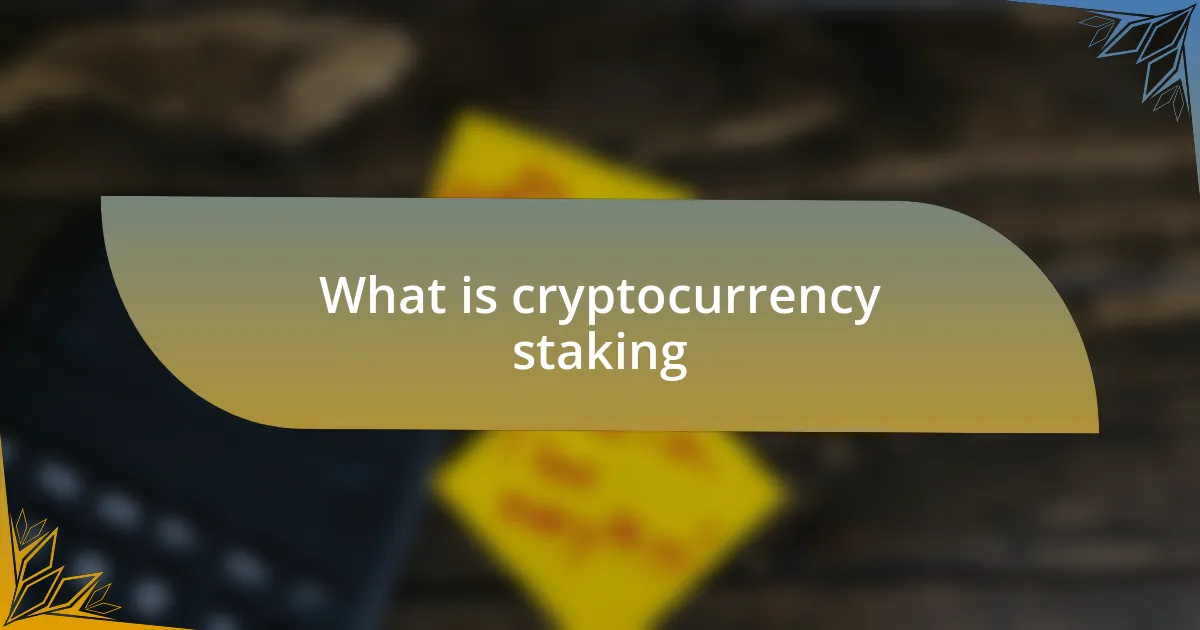
What is cryptocurrency staking
Cryptocurrency staking is a process where individuals lock up their digital assets to support the operations of a blockchain network. When I first learned about staking, it struck me as an intriguing way to earn passive income while contributing to a network’s security and efficiency. Isn’t it fascinating that your coins can actually work for you while you hold them?
In simple terms, staking involves participating in a proof-of-stake (PoS) system, a consensus mechanism used by various cryptocurrencies. This approach contrasts sharply with mining, which requires significant computational power. I remember feeling empowered when I realized that, with staking, I didn’t need a high-end rig or technical know-how; all it took was some research and a secure wallet.
The rewards for staking, often distributed as additional tokens, can significantly boost your investment over time. However, it’s crucial to understand that staking also comes with risks, such as market volatility and the potential for losing access to your staked assets. Reflecting on my own experience, I’ve learned that balancing the prospects of earning rewards against the risks involved is essential for any investor looking to venture into this space.
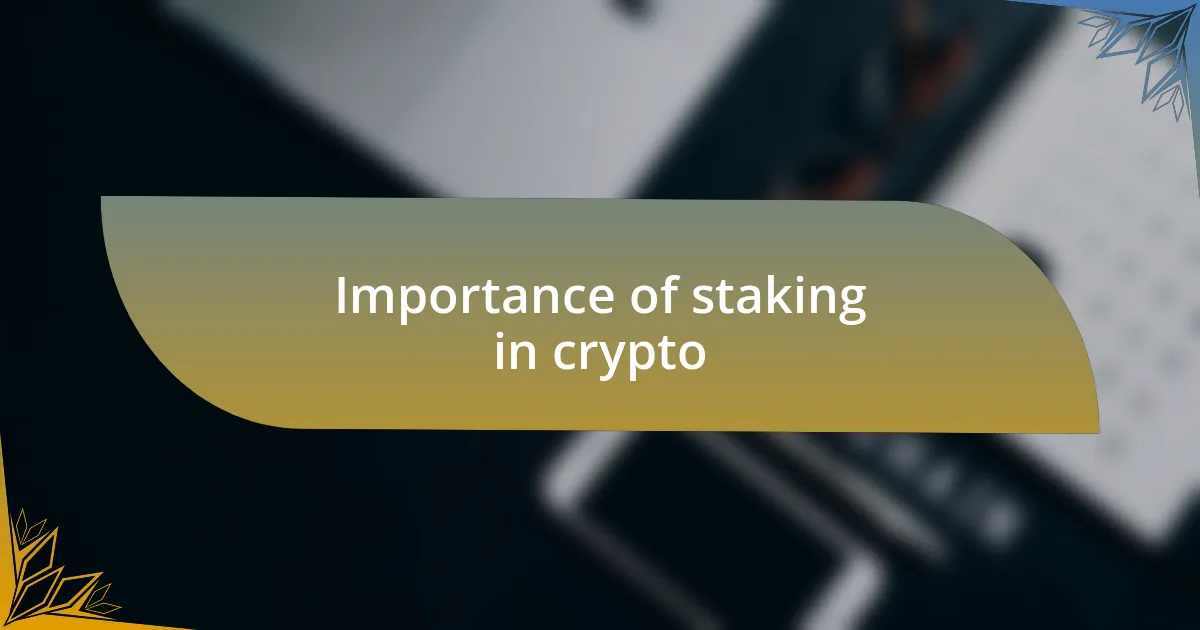
Importance of staking in crypto
Staking plays a crucial role in the cryptocurrency ecosystem, as it helps secure the network and validate transactions. I remember when I first grasped this concept; it was as if a light bulb went off in my head. The idea that my participation could directly impact network integrity while also earning me rewards felt empowering.
Beyond just securing the blockchain, staking encourages long-term investment and commitment to a project. I often find myself pondering how much more connected I feel to the cryptocurrency I stake; it’s not just about the rewards for me, but also about being a part of something larger. This sense of community and shared purpose deepens my appreciation for the technology and the principles behind it.
Moreover, the financial benefits of staking can be significant in the long run, acting as a counterbalance to the inherent volatility of crypto markets. I still recall my excitement the first time I saw my staking rewards accumulate—those extra tokens felt like a reward for both patience and trust in the technology. Have you ever experienced that thrill? It’s a unique blend of anticipation and gratification that can truly redefine your approach to investment in the crypto space.
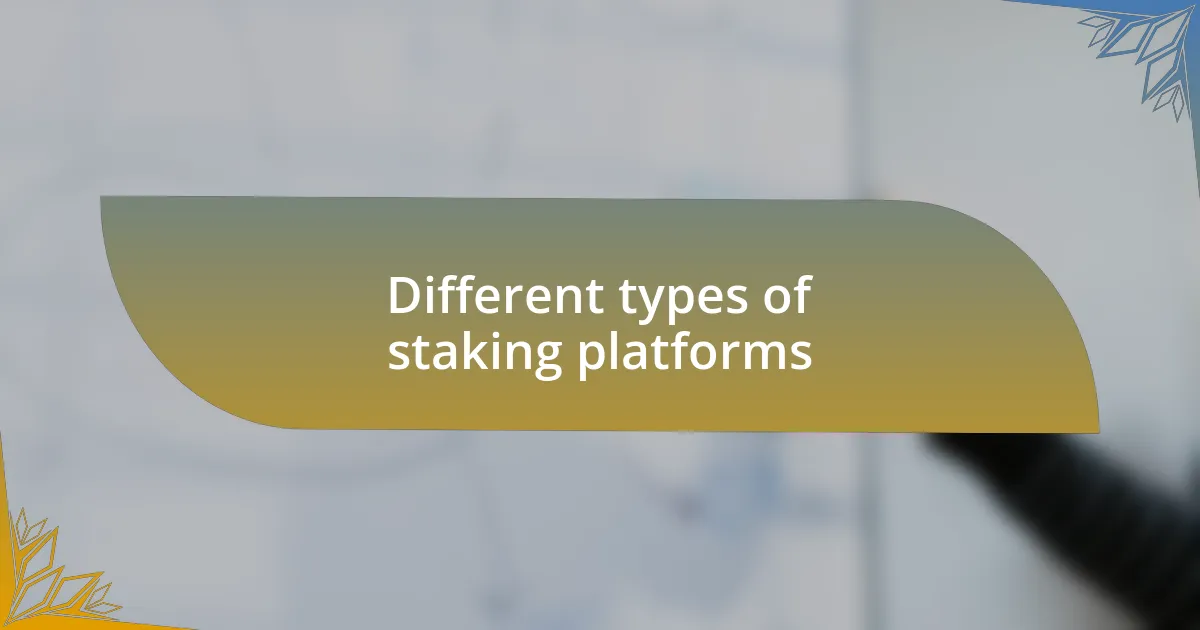
Different types of staking platforms
When exploring the landscape of staking platforms, you quickly realize there are versatile options tailored for different needs. For instance, I’ve tried both exchange-based staking and independent staking pools. The exchange platforms are convenient—everything’s in one place, and I can easily track my earnings. But I’ve also enjoyed the more decentralized experience of staking pools, where the community aspect is palpable and I feel more in control of my stakes.
Another aspect that fascinates me is the difference between custodial and non-custodial staking. Custodial platforms, where you entrust your tokens to a service, offer simplicity but come with the risk of third-party control. On the other hand, non-custodial staking allows me to retain ownership and control over my assets, which is a significant comfort. Have you ever had that moment of anxiety when realizing you’ve given up control?
Furthermore, the emerging trend of DeFi staking platforms has caught my attention as well. I vividly remember my first experience with a DeFi platform; I was impressed by the yields that exceeded traditional staking options. The thrill of using smart contracts and interacting with blockchain technology in a hands-on way felt revolutionary. It makes me wonder how many new investors are ready to embrace this evolution in staking and redefine their financial strategies in the crypto realm.
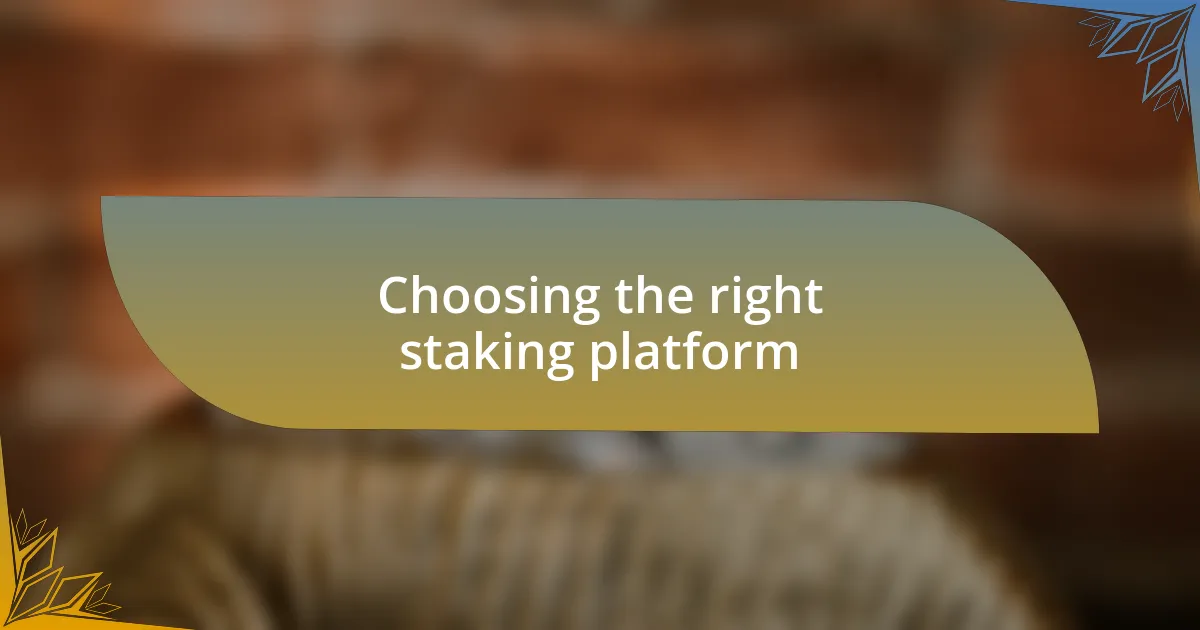
Choosing the right staking platform
When choosing a staking platform, I always consider the platform’s reputation and security measures. A couple of months ago, I faced a troubling experience with a lesser-known platform that seemed promising but ultimately failed to deliver on security. I wouldn’t want anyone to go through the sleepless nights I had, questioning if my funds were safe. Have you ever felt that sinking feeling when your trust is tested?
User experience also plays a vital role in my decision-making process. I recall stumbling upon a user-friendly platform that impressed me with its intuitive interface; it felt welcoming rather than intimidating. The ability to easily navigate and manage my staking rewards makes the whole experience more enjoyable. After all, shouldn’t engaging with our investments be straightforward?
Lastly, I emphasize evaluating the rewards and lock-up periods offered by different platforms. Interestingly, I once locked my tokens for what I thought was a great rate, only to find the conditions weren’t favorable for my needs. It’s crucial to weigh the potential earnings against your personal investment strategy and liquidity preferences. What have you found works best for your staking journey?
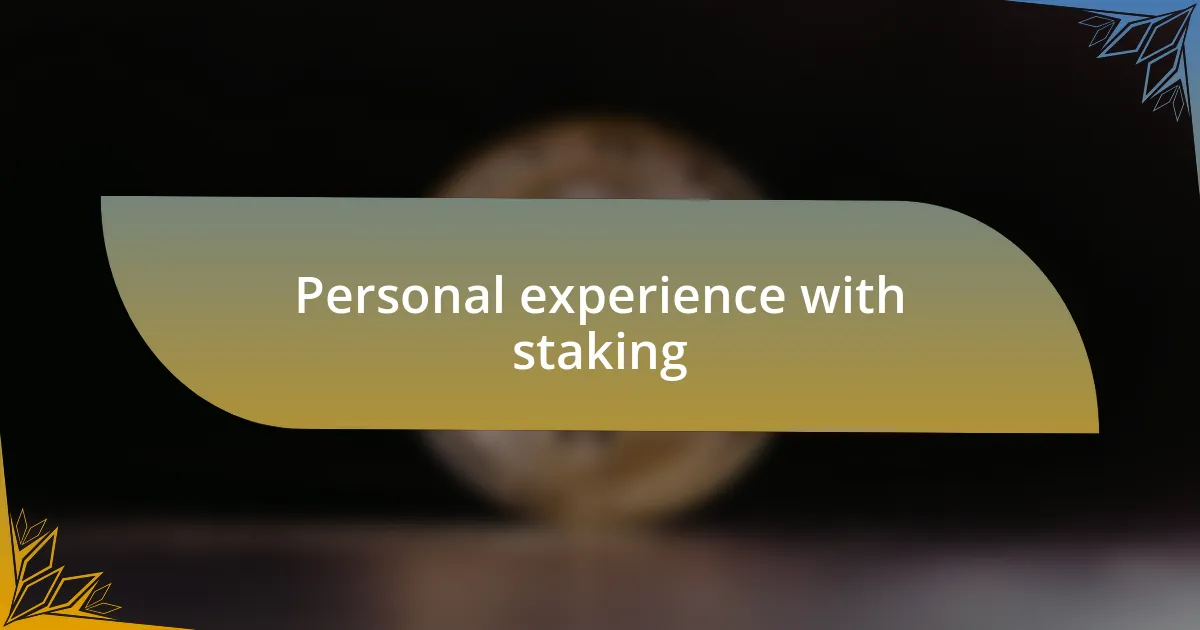
Personal experience with staking
Staking has been a game changer for my cryptocurrency journey. I still remember the excitement I felt when I first staked my tokens. Watching my rewards accumulate over time felt like seeing my hard work pay off, but it wasn’t without its challenges. Did you ever experience a moment when you realized the value of patience in staking?
One of the striking lessons I learned was the importance of keeping track of my staked assets. I once mistakenly overlooked a significant shift in the platform’s reward structure and missed out on maximizing my earnings for a couple of weeks. That experience taught me to stay informed and regularly check updates—how do you ensure you’re updated on your staking investments?
Furthermore, I encountered a period of market volatility that tested my resolve. Watching the value of my staked tokens fluctuate was nerve-wracking, but I remembered why I chose to stake in the first place: the long-term benefits. It’s in those moments of uncertainty that I find my confidence bolstered by the knowledge that I am contributing to the network’s security. Have you ever found yourself questioning the stability of your investments during a downturn?